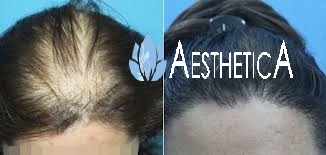Female hair loss is one
of the most common problems faced by women in India. It is caused by different
factors and is experienced by women of all ages. Hormonal imbalances caused by
pregnancy, menopause or any other problem can result in hair loss in females.
Prolonged Stress or illness may also cause hair loss. Use of harmful chemicals
can also aggravate hair loss. Going bald is a mind boggling condition which is
caused because of shifting reasons and factors. Habitually, balding creates on
account of numerous ecological factors just as hereditary inclinations. Now and
again, drugs, certain systems or ailments can be the essential driver on the
declaration of balding. One best technique to forestall the reason is to
experience with Best Hair Transplant
Clinic in India which can spare your hair from being diminishing and shedding.
Types
of Hair Loss
Female
Pattern Baldness (Androgenic Alopecia)
Androgenetic Alopecia, known as pattern
baldness is a hereditary disorder. It is caused due to the influence of
androgenic hormones which makes the hair follicles shrink. In males, it begins
with a well-defined pattern above the temples, which then, over a period of time
is observed as a receding hair line. In case of women, the pattern of hair fall
and thinning is different. The hair starts thinning from all over the head.
Pattern hair loss, caused by hereditary
factors is classified under the Lugwig scale into three stages or types.
Ludwig
Scale : Stage 1
Type 1 is considered a mild stage of hair
loss. This hair loss may occur on the top and front of the scalp but the
frontal hairline may be relatively unaffected. More and more scalp becomes
visible with time and the hair loss is noticeable when the hair is parted at
the center of the scalp.
Ludwig
Scale : Stage 2
Type 2 is considered a moderate stage of hair
loss. The center parting gets widened and further shedding and decrease in
volume is observed.
Ludwig Scale:
Stage 3
Type 3 is an advanced stage wherein the hair
loss is extensive and the progressive thinning and hair miniaturization makes
the hair so thin that the scalp becomes very visible.
Shedding
or Thinning (Telogen Effluvium)
Telogen Effluvium is a form of diffused hair
shedding or thinning that happens all over the scalp. Usually your hair is in
the anagen phase for two to four years before entering the telogen phase for
two to four months, after which it sheds and is replaced by new hair. When the
hair makes an early entry into the telogen phase it is called as the resting
phase. The signs start becoming visible in 2-3 months, whereas hair fall
continues for 3-6 months.
Localized
Patches Hairfall (Alopecia Areata)
Alopecia Areata is spot baldness in which hair
is lost in coin shaped patches. It occurs when body’s immune system attacks its
own hair follicles and stops it from growing. If the patches are not many in
number then there are chances that hair will grow back, but in severe cases the
patches might multiply. This condition usually begins with falling of hair
strands resulting in hairless patches on the scalp. The lost hair generally
grows back in a few months.
Chemotheraphy
Baldness (Anagen Effluvium)
This hair loss is generally associated with
chemotherapy. There is an attack on the hair follicles which hampers its
mitotic or metabolic activity. Anagen Effluvium includes shedding of hair soon
after chemotherapy begins during the growth (anagen) phase of hair. The hair
loss is mostly reversible and the hair grow back within months of resolving the
causative factors. You can consult our dermatologist in Delhi for Best Hair Transplant.
Scar
Baldness (Cicatricial Alopecia)
Cicatricial Alopecia is also commonly known as
scarring alopecia. It is a rare disorder that destroys hair follicles. The hair
loss is permanent and the hair follicles are replaced by scar tissue. Commonly
experienced symptoms include pain, severe itching and burning sensation. Visit
a dermatologist if you are experiencing chronic hair loss and other related
symptoms in order to start an early and aggressive treatment.
Traumatized
Baldness (Traction Alopecia)
Traction Alopecia is caused by localized
trauma to the hair follicles due to constant traction or pull applied to hair
over time. Tight braiding, cornrows, tight ponytail and tight headgears can
lead to hair loss eventually. It is common among Sikh men who prefer to use
turban all the time. The stress caused on the hair can result in balding.
Compulsive
Disorder Baldness (Trichotillomania)
It is compulsive disorder urging people to
pull out hair from scalp, beard, eyebrows, eyelashes and other parts of the
body. It can eventually lead to visible bald patches on the scalp. Expert
advice and help must be sought to correct this repetitive behavior and restore
back the lost hair.
































